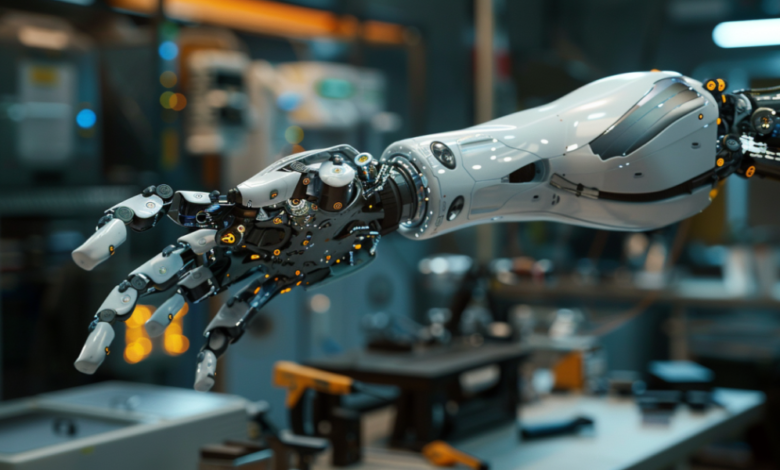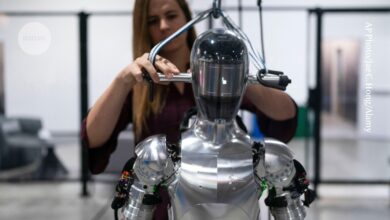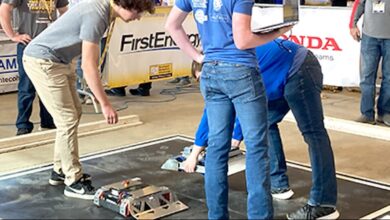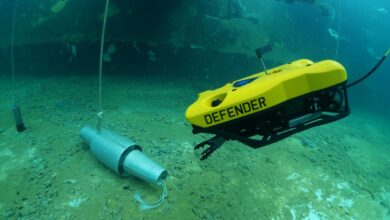Combining Diverse Datasets to Train Versatile Robots with PoCo Technique

One of the most significant challenges in robotics is training multipurpose robots capable of adapting to various tasks and environments. To create such versatile machines, researchers and engineers require access to large, diverse datasets that encompass a wide range of scenarios and applications. However, the heterogeneous nature of robotic data makes it difficult to efficiently incorporate information from multiple sources into a single, cohesive machine learning model.
To address this challenge, a team of researchers from the Massachusetts Institute of Technology (MIT) has developed an innovative technique called Policy Composition (PoCo). This groundbreaking approach combines multiple sources of data across domains, modalities, and tasks using a type of generative AI known as diffusion models. By leveraging the power of PoCo, the researchers aim to train multipurpose robots that can quickly adapt to new situations and perform a variety of tasks with increased efficiency and accuracy.
The Heterogeneity of Robotic Datasets
One of the primary obstacles in training multipurpose robots is the vast heterogeneity of robotic datasets. These datasets can vary significantly in terms of data modality, with some containing color images while others are composed of tactile imprints or other sensory information. This diversity in data representation poses a challenge for machine learning models, as they must be able to process and interpret different types of input effectively.
Moreover, robotic datasets can be collected from various domains, such as simulations or human demonstrations. Simulated environments provide a controlled setting for data collection but may not always accurately represent real-world scenarios. On the other hand, human demonstrations offer valuable insights into how tasks can be performed but may be limited in terms of scalability and consistency.
Another critical aspect of robotic datasets is their specificity to unique tasks and environments. For instance, a dataset collected from a robotic warehouse may focus on tasks such as item packing and retrieval, while a dataset from a manufacturing plant might emphasize assembly line operations. This specificity makes it challenging to develop a single, universal model that can adapt to a wide range of applications.
Consequently, the difficulty in efficiently incorporating diverse data from multiple sources into machine learning models has been a significant hurdle in the development of multipurpose robots. Traditional approaches often rely on a single type of data to train a robot, resulting in limited adaptability and generalization to new tasks and environments. To overcome this limitation, the MIT researchers sought to develop a novel technique that could effectively combine heterogeneous datasets and enable the creation of more versatile and capable robotic systems.
Source: MIT Researchers
Policy Composition (PoCo) Technique
The Policy Composition (PoCo) technique developed by the MIT researchers addresses the challenges posed by heterogeneous robotic datasets by leveraging the power of diffusion models. The core idea behind PoCo is to:
- Train separate diffusion models for individual tasks and datasets
- Combine the learned policies to create a general policy that can handle multiple tasks and settings
PoCo begins by training individual diffusion models on specific tasks and datasets. Each diffusion model learns a strategy, or policy, for completing a particular task using the information provided by its associated dataset. These policies represent the optimal approach for accomplishing the task given the available data.
Diffusion models, typically used for image generation, are employed to represent the learned policies. Instead of generating images, the diffusion models in PoCo generate trajectories for a robot to follow. By iteratively refining the output and removing noise, the diffusion models create smooth and efficient trajectories for task completion.
Once the individual policies are learned, PoCo combines them to create a general policy using a weighted approach, where each policy is assigned a weight based on its relevance and importance to the overall task. After the initial combination, PoCo performs iterative refinement to ensure that the general policy satisfies the objectives of each individual policy, optimizing it to achieve the best possible performance across all tasks and settings.
Benefits of the PoCo Approach
The PoCo technique offers several significant benefits over traditional approaches to training multipurpose robots:
- Improved task performance: In simulations and real-world experiments, robots trained using PoCo demonstrated a 20% improvement in task performance compared to baseline techniques.
- Versatility and adaptability: PoCo allows for the combination of policies that excel in different aspects, such as dexterity and generalization, enabling robots to achieve the best of both worlds.
- Flexibility in incorporating new data: When new datasets become available, researchers can easily integrate additional diffusion models into the existing PoCo framework without starting the entire training process from scratch.
This flexibility allows for the continuous improvement and expansion of robotic capabilities as new data becomes available, making PoCo a powerful tool in the development of advanced, multipurpose robotic systems.
Experiments and Results
To validate the effectiveness of the PoCo technique, the MIT researchers conducted both simulations and real-world experiments using robotic arms. These experiments aimed to demonstrate the improvements in task performance achieved by robots trained with PoCo compared to those trained using traditional methods.
Simulations and real-world experiments with robotic arms
The researchers tested PoCo in simulated environments and on physical robotic arms. The robotic arms were tasked with performing a variety of tool-use tasks, such as hammering a nail or flipping an object with a spatula. These experiments provided a comprehensive evaluation of PoCo’s performance in different settings.
Demonstrated improvements in task performance using PoCo
The results of the experiments showed that robots trained using PoCo achieved a 20% improvement in task performance compared to baseline methods. The improved performance was evident in both simulations and real-world settings, highlighting the robustness and effectiveness of the PoCo technique. The researchers observed that the combined trajectories generated by PoCo were visually superior to those produced by individual policies, demonstrating the benefits of policy composition.
Potential for future applications in long-horizon tasks and larger datasets
The success of PoCo in the conducted experiments opens up exciting possibilities for future applications. The researchers aim to apply PoCo to long-horizon tasks, where robots need to perform a sequence of actions using different tools. They also plan to incorporate larger robotics datasets to further improve the performance and generalization capabilities of robots trained with PoCo. These future applications have the potential to significantly advance the field of robotics and bring us closer to the development of truly versatile and intelligent robots.
The Future of Multipurpose Robot Training
The development of the PoCo technique represents a significant step forward in the training of multipurpose robots. However, there are still challenges and opportunities that lie ahead in this field.
To create highly capable and adaptable robots, it is crucial to leverage data from various sources. Internet data, simulation data, and real robot data each provide unique insights and benefits for robot training. Combining these different types of data effectively will be a key factor in the success of future robotics research and development.
The PoCo technique demonstrates the potential for combining diverse datasets to train robots more effectively. By leveraging diffusion models and policy composition, PoCo provides a framework for integrating data from different modalities and domains. While there is still work to be done, PoCo represents a solid step in the right direction towards unlocking the full potential of data combination in robotics.
The ability to combine diverse datasets and train robots on multiple tasks has significant implications for the development of versatile and adaptable robots. By enabling robots to learn from a wide range of experiences and adapt to new situations, techniques like PoCo can pave the way for the creation of truly intelligent and capable robotic systems. As research in this field progresses, we can expect to see robots that can seamlessly navigate complex environments, perform a variety of tasks, and continuously improve their skills over time.
The future of multipurpose robot training is filled with exciting possibilities, and techniques like PoCo are at the forefront. As researchers continue to explore new ways to combine data and train robots more effectively, we can look forward to a future where robots are intelligent partners that can assist us in a wide range of tasks and domains.





